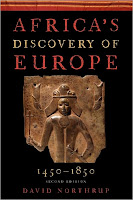Victors and Vanquished: Spanish and Nahua Views of the Conquest of Mexico
edited by Stuart B. Schwartz
In 1519 Hernán Cortés and a small band of Spanish conquistadors overthrew the mighty Mexican empire of the Aztecs. Using excerpts primarily drawn from Bernal Diaz's 1632 account of the Spanish victory and testimonies — many recently uncovered — of indigenous Nahua survivors,
Victors and Vanquished clearly demonstrates how personal interests, class and ethnic biases, and political considerations influenced the interpretation of momentous events. A substantial introduction is followed by 9 chronological sections that illuminate the major events and personalities in this powerful historical episode and reveal the changing attitudes toward European expansionism. The volume includes a broad array of visual images and maps, a glossary of Spanish and Nahua terms, biographical notes, a chronology, a selected bibliography, questions for consideration, and an index.
STUART B. SCHWARTZ is George Burton Adams Professor of History at Yale University. His scholary work concentrates on the early history of Latin America and the history of Brazil. He is the author of
Slaves, Peasants, and Rebels: Reconsidering Brazilian Slavery (1992) and
Sugar Plantations and the Formation of Brazilian Society: Bahia 1550-1835 (1985), which won the American Historical Association's Bolton Prize for the Best Work in Latin American History. Professor Schwartz is also editor of
Implicit Understandings: The Encounter Between Europeans and Other Peoples in the Early Modern Era (1994) and a coeditor of
The Cambridge History of Native American Peoples (1999). A former fellow of the John Simon Guggenheim Memorial Foundation, the Institute for Advanced Study, and the American Council of Learned Societies, he is currently completing a work entitled
The Rebellion of Portugal and the Crisis of the Iberian Empires, 1621-1668.






